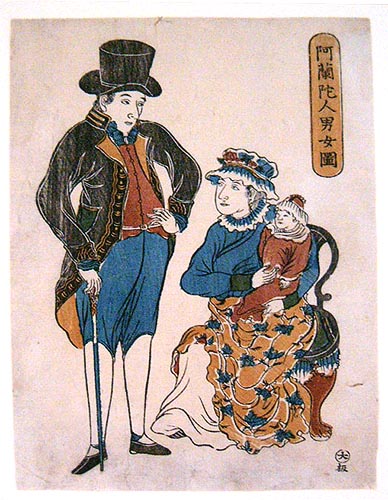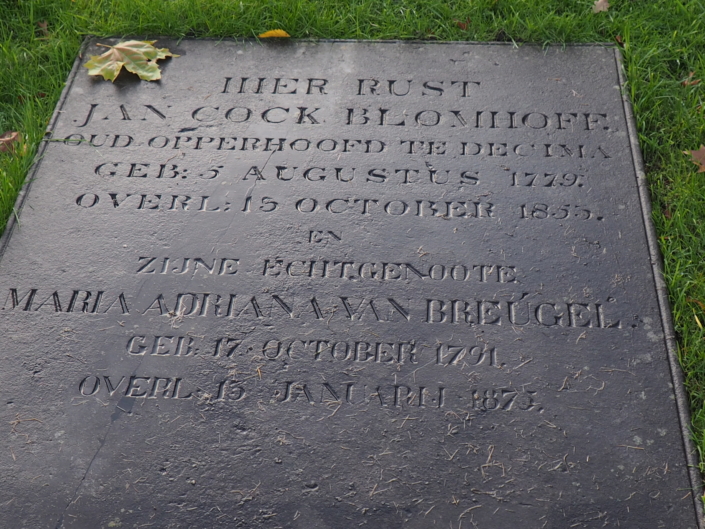The Colonial Walk
10. Jan Cock Blomhoff (1779-1853)
Park near gravestone Burgermeester Brouwer Plantsoen
In the park with the large (artificial) chairs, there are several gravestones, including one for Jan Cock Blomhoff. Jan Cock Blomhoff was born in Amsterdam in 1779 and died in Amersfoort in 1853. From 1809 to 1813, he was the warehouse manager at the Dutch trading post on the island of Dejima. He then became involved in negotiations with the British about the future of the island. It was only in 1815, when the new Kingdom of the Netherlands was created, that the British allowed him to leave and King Willem I appointed Cock Blomhoff as head of the trading post at Dejima. It took until August 1816 before he left from Texel for Dejima, with his wife Titia Bergsma, his newborn son Johannes and nanny Petronella Munts. This type of group was exceptional as western women were not permitted to enter Japan. The governor of Nagasaki gave the women permission to go but the shogun refused to provide a residence permit. This meant that Titia, Johannes and Petronella had to return home.
(Text continues below the photo)

On 4 December 1817, Jan Cock Blomhoff took them to the ship that was to take them back to the Netherlands. He never saw Titia again; she died in 1821. Cock Blomhoff was chief of Dejima for six years. One of the issues for which he is known, even now, is the official visit to the Japanese emperor that he made in 1818. This journey to the court (‘hofreis’) was a ceremonial obligation. Once every four years, the Dutch chief, accompanied by a huge entourage and loaded with gifts, would travel to Edo and pay his respects to the shogun. The journey to the court was an enormous undertaking. The journey of around 1500 km involved travelling by boat and on foot in sedan chairs and could last several months. In total, around one hundred men took part. Cock Blomhoff kept a journal of his journey in 1818, which has been published. In 1824, Cock Blomhoff returned to the Netherlands and lived in Amersfoort from 1844 with his second wife. While there, he built the Birkhoven house which has now been demolished. He died in 1853 in Amersfoort and was buried at the ‘Achter Davidshof’ cemetery. In 1978, the cemetery was cleared for the purposes of building the new town hall. Behind the town hall, there is a small park where his gravestone can still be seen.












